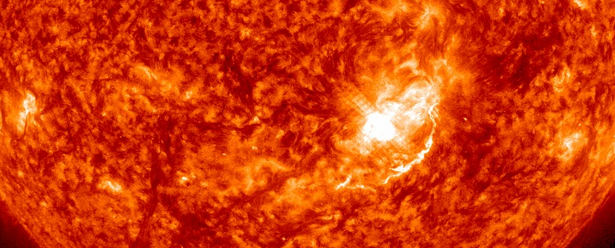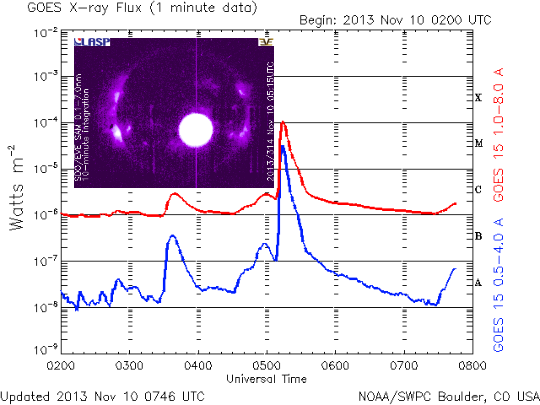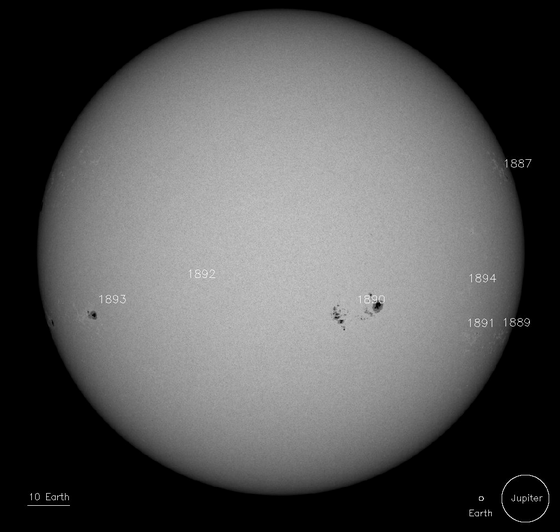Major X1.1 solar flare erupted from Earth facing AR 1890

Active Region 1890, located almost at the center of the disk, erupted with impulsive X1.1 solar flare at 05:14 UTC on November 10, 2013. A very bright Coronal Mass Ejection (CME) has been observed and the bulk mass seems to be heading well south of the ecliptic. A glancing blow to Earth's magnetic field is expected sometime late November 12.
Associated with this eruption was a 10cm Radio Burst (TenFlare) reaching 360 Solar Flux Units lasting 3 minutes and a Type II and IV Radio Emissions.

SUMMARY: X-ray Event exceeded X1
Begin Time: 2013 Nov 10 0508 UTC
Maximum Time: 2013 Nov 10 0514 UTC
End Time: 2013 Nov 10 0518 UTC
X-ray Class: X1.1
Optical Class: 2b
Location: S14W13
NOAA Scale: R3 – Strong
Potential Impacts: Area of impact consists of large portions of the sunlit side of Earth, strongest at the sub-solar point.
Radio – Wide area blackout of HF (high frequency) radio communication for about an hour.
***
ALERT: Type II Radio Emission
Begin Time: 2013 Nov 10 0513 UTC
Estimated Velocity: 1012 km/s
Description: Type II emissions occur in association with eruptions on the sun and typically indicate a coronal mass ejection is associated with a flare event.
***
ALERT: Type IV Radio Emission
Begin Time: 2013 Nov 10 0534 UTC
Description: Type IV emissions occur in association with major eruptions on the sun and are typically associated with strong coronal mass ejections and solar radiation storms.
***
SUMMARY: 10cm Radio Burst
Begin Time: 2013 Nov 10 0512 UTC
Maximum Time: 2013 Nov 10 0513 UTC
End Time: 2013 Nov 10 0514 UTC
Duration: 3 minutes
Peak Flux: 360 sfu
Latest Penticton Noon Flux: 148 sfu
Description: A 10cm radio burst indicates that the electromagnetic burst associated with a solar flare at the 10cm wavelength was double or greater than the initial 10cm radio background. This can be indicative of significant radio noise in association with a solar flare. This noise is generally short-lived but can cause interference for sensitive receivers including radar, GPS, and satellite communications.

Sunspots
There are currently 4 numbered sunspot regions on the disk.


1887 – Beta
1890 – Beta-Gamma-Delta
1891 – Beta
1893 – Alpha
NOAA SWPC forecasters estimate 50% chance for M-class, and 20% chance for X-class solar flare in the next three days.
Featured image: NASA SDO AIA 304

Commenting rules and guidelines
We value the thoughts and opinions of our readers and welcome healthy discussions on our website. In order to maintain a respectful and positive community, we ask that all commenters follow these rules.